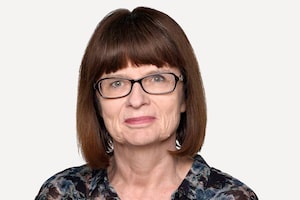B.C. Liberal leader Christy Clark waves to the crowd after she arrives on stage after winning the British Columbia provincial election in Vancouver, B.C. Tuesday, May 14, 2013.The Canadian Press
During election campaigns, readers often wonder how news organizations can be fair and balanced when they also endorse one side or another in their editorials.
Last weekend, for instance, an editorial in The Globe and Mail took on the British Columbia election. The piece expressed concern about Liberal incumbent Christy Clark's "my-way provincialist" mentality, noting that she "is not as much respected as B.C. expects of its premiers." At the same time, the writer suggested that she was a better choice than the New Democrats and leader Adrian Dix, deeming them "too risky."
Newspapers have a long tradition of endorsing parties. But The Globe's journalistic practices also state clearly that there must be a distinction between the paper's editorial views and "the coverage, selection, editing and play of the news."
So how did The Globe do? To test the paper's balance, I kept track of all the articles on the campaign – and there were lots. Pieces included campaign stories, articles on the main parties, riding profiles and hits on former premiers and their views.
In terms of the number of stories and how they were played, coverage was very balanced between the two main parties. There was much less of a focus on the Greens and Conservatives, but that reflects those parties' polling status during the race, and individual riding profiles did spotlight Independents and smaller parties where they had a chance of winning.
Where coverage was less even was in the paper's choice of photographs – both in print and online. In total, there were 20 photos of Christy Clark, 15 of Adrian Dix, four of Green Party Leader Jane Sterk and three of Conservative Leader John Cummins. That proportion carried through online photo galleries as well.
News and Sports Editor Sinclair Stewart notes that "the decision to endorse a candidate is not made until very late in the campaign cycle – and that decision does not involve the reporters or editors who write and assign stories. We strive for equivalency, and that balance, be it in profiles or stories from the ground campaign, was reflected in our coverage."
On the question of photos, he says the selection is less centralized, involving multiple sections and, in print, multiple editions and page shapes.
"It also involves many more participants, from news editors and photo editors to page designers," he says. "While that makes it more complex to ensure equal visual treatment for the candidates throughout the campaign, it doesn't mean we can't do a better job achieving photographic balance in future elections."
Simon Fraser University Communication Professor Robert Hackett would agree. He sees quantitative measurement of news coverage as the first step in evaluating media bias. He also calls attention to the issue of how articles are framed.
"Goldfish can't see the bowl they are swimming in," Prof. Hackett says. "The notion of journalistic objectivity can lead to frame blindness and it is important to stand back and consider different perspectives and a broader range of sources."
Prof. Hackett did not study the B.C. election. Still, it's great advice for political journalists (and anyone covering a beat) to be aware of subtle biases – and balance should be a target for both words and photos.
As for polling? The failure of opinion polls to predict the results in the B.C. election proved newsworthy in itself, and suggests newspapers reconsider how they rely on them.
 Sylvia Stead
Sylvia Stead